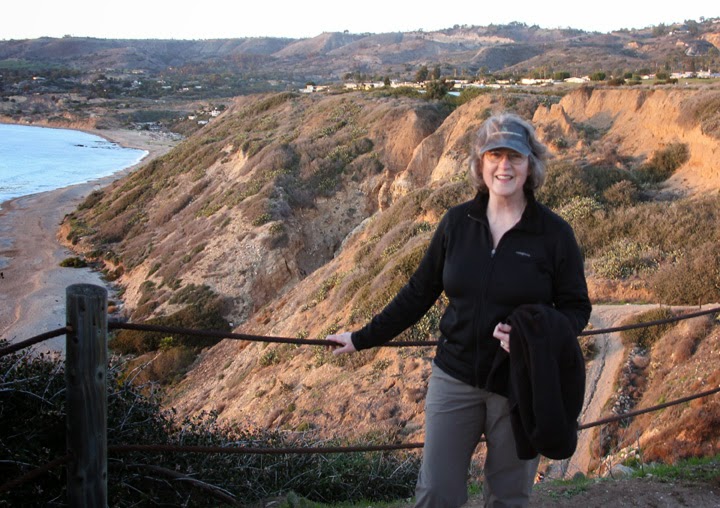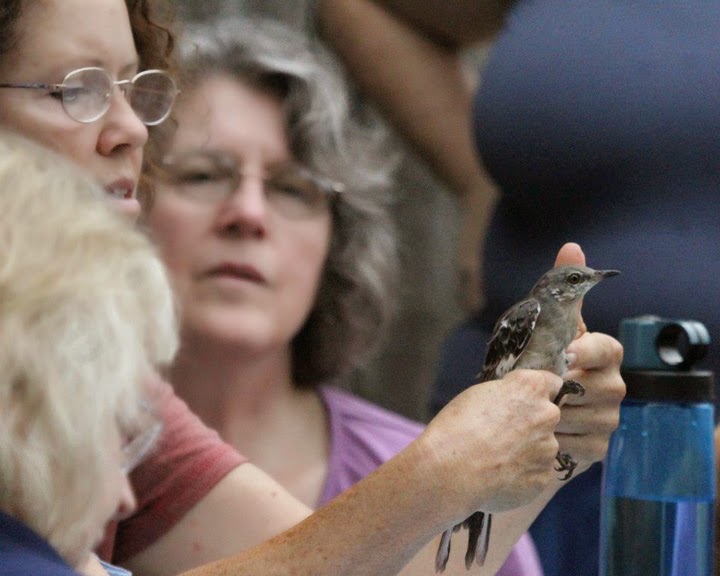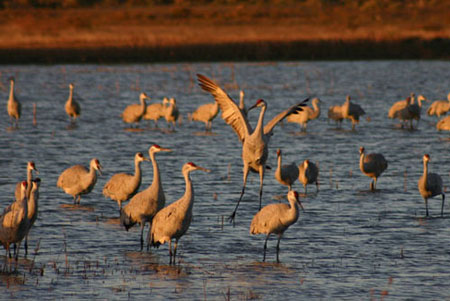Wood warblers are among the most beautiful and elusive birds to observe. During fall migration they become even more challenging, with many changing from their brilliant breeding plumage into more subtle neutral shades, making it harder to both see them and to distinguish species.
The Nashville Warbler, shown above and below, is one warbler species that does not dramatically change in the fall, but retains much of its breeding plumage coloration. This warbler is named after Nashville, Tennessee, the location where it was first observed in 1811, by Alexander Wilson, the man who named the species. Since Nashville is my birth place and where I spent my childhood years, my curiosity has always peaked when hearing reports of both Nashville warblers and Tennessee warblers as they migrate through Tennessee, but until last weekend, I had never seen either. Last Sunday, I had the pleasure of seeing both these species for the very first time, and up close, at a banding session at Seven Islands Wildlife Refuge.
Birds are truly beautiful from head to toe and this beauty becomes even more amazing while viewing them at close range. I never fail to marvel at the shimmering iridescence that is often hidden even in plumage that gives the bird an overall neutral appearance. Since the work of banding is primarily to document a bird's presence, health and other information used to understand the overall health and status of a species population, not much time is available for photographing during a busy banding morning. But since this Nashville Warbler was our last banded bird for the session and quite alert and spunky, we had opportunity to admire and enjoy him. His color details include: a clear and prominent white eye-ring, pale gray plumage on the head that blends into deep olive on the back and wings (no wing bars), a brilliant yellow throat and belly, a hidden "chestnut" crown (male) and the repetition of that beautiful yellow on its foot pads.
When painting an image, an artist strives to create unity with color and contrast, and with the repetition and mixing of colors that unite the finished work. In nature we find this same unity occurring naturally, as though a Divine Artist has picked up a brush and painted each bird with the most incredible skill and beauty. Add to this the complex function of each unique characteristic that is found in a bird species, and you have what I consider to be one of the greatest wonders of nature.
This particular male Nashville warbler had a crown patch the hue of deep red wine hidden beneath his gray feather tips. The reddish color actually occurs mid-way in the feather, with the tip and base being gray. From my position, light enabled me to see the red color glowing through the gray feather tips, though if you looked down on the head, there was only the appearance of gray. And who gets to see the beauty of a bird's foot pad, but the birds themselves and those of us lucky enough to be present at a banding table!
Seven Islands Wildlife Refuge is a haven for migrating birds. Planted in warm season grasses with many seed and fruit producing shrubby areas, fruit and berry trees along edges, and native wildflowers, it provides both abundant food sources for migrating birds and a wintering-over spot for birds that remain in the Tennessee Valley during the winter.
Right now the refuge is awash with vibrant fall colors in native wildflowers that are both beautiful and produce an abundance of seeds for birds and other wildlife.
Below, you can see seeds emerging from what I believe is a tickseed sunflower, a member of the Aster family.
And below, emerging seeds in the flower heads of White Crownbeard. This was only my glimpse as I was leaving the refuge. I'm looking forward to returning soon for a long leisurely hike and a better look at this year's fall season bounty.
Links and Resources:
Click on the links to see more about bird-banding and Seven Islands Wildlife Refuge.
You may also enjoy visiting the Seven Islands Wildlife Refuge website.
More of my posts on warblers can be found at these links: Wood Warblers and New River Birding and Nature Festival
Visit Cornell's information pages on the Nashville Warbler and the Tennessee Warbler
Information about the tickseed sunflower




































